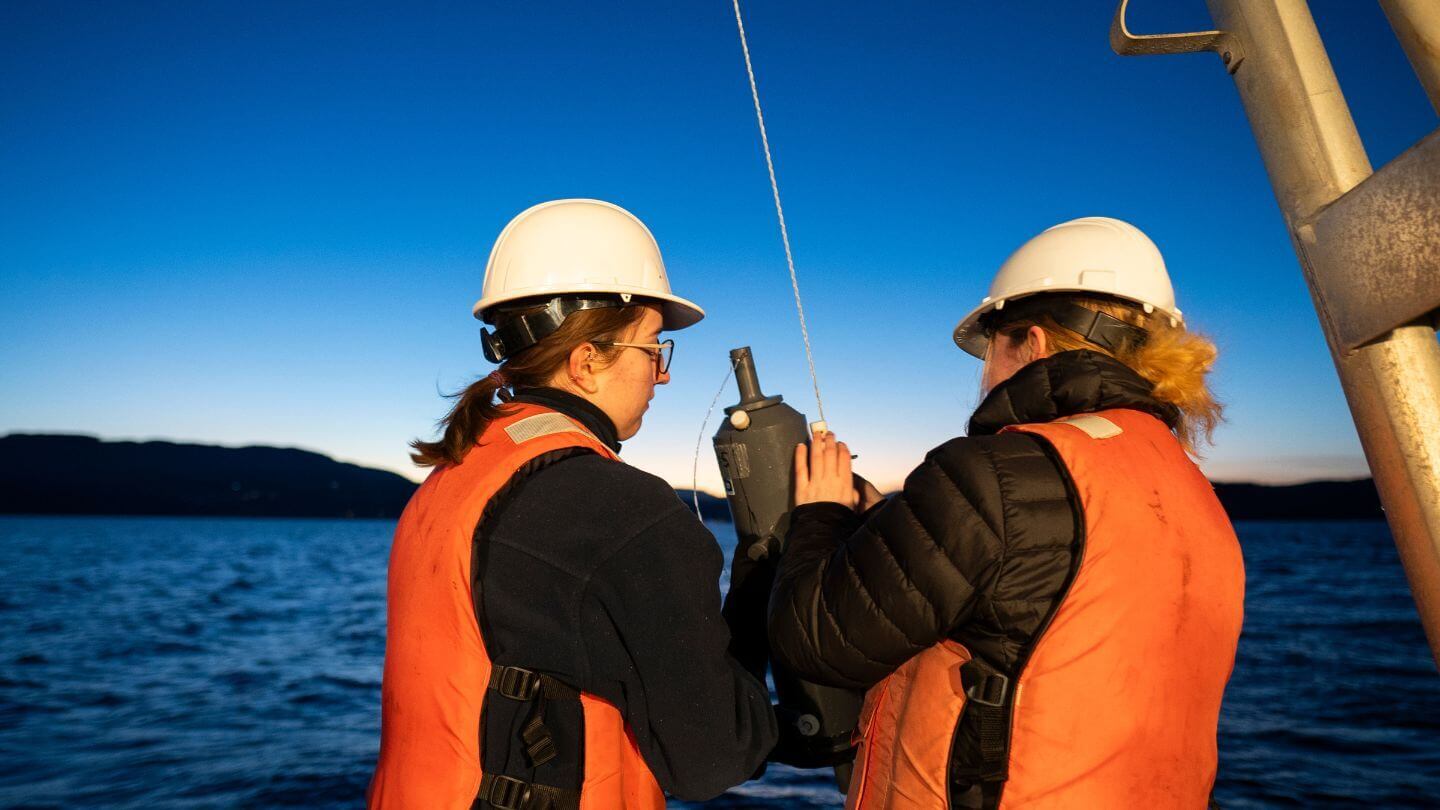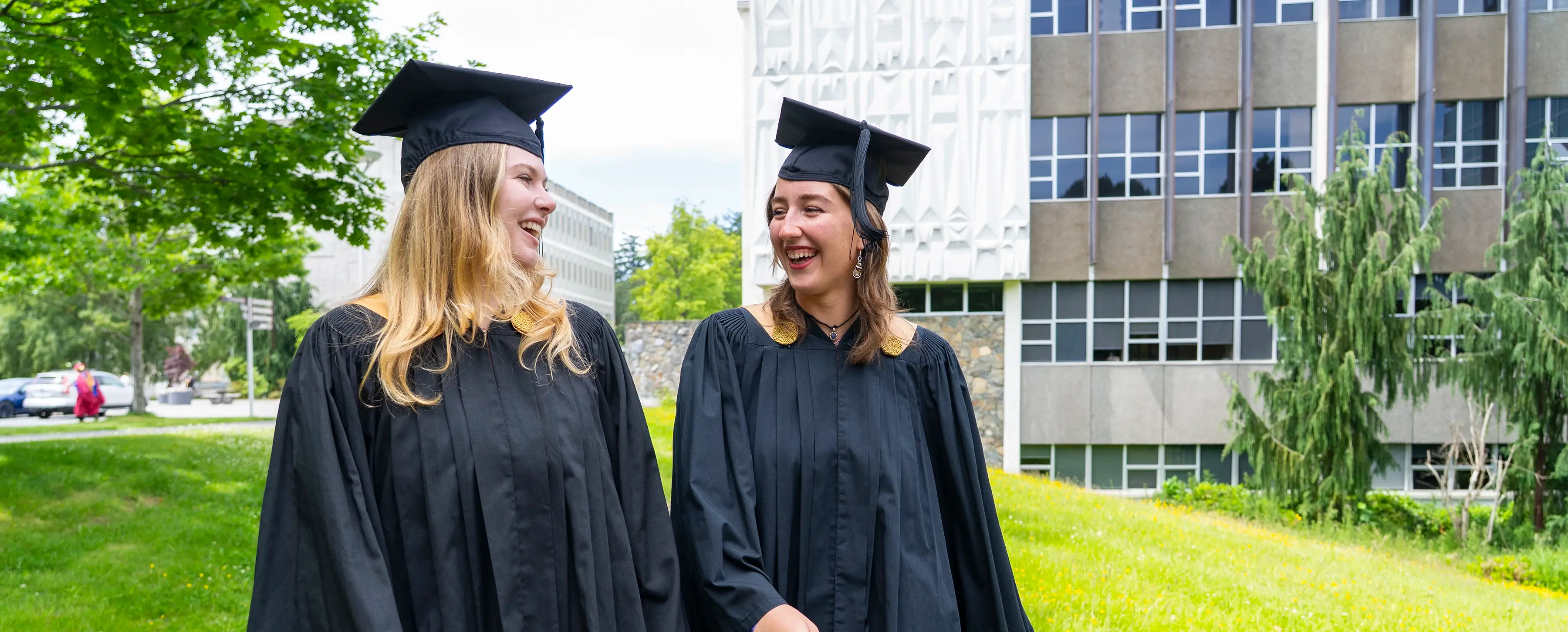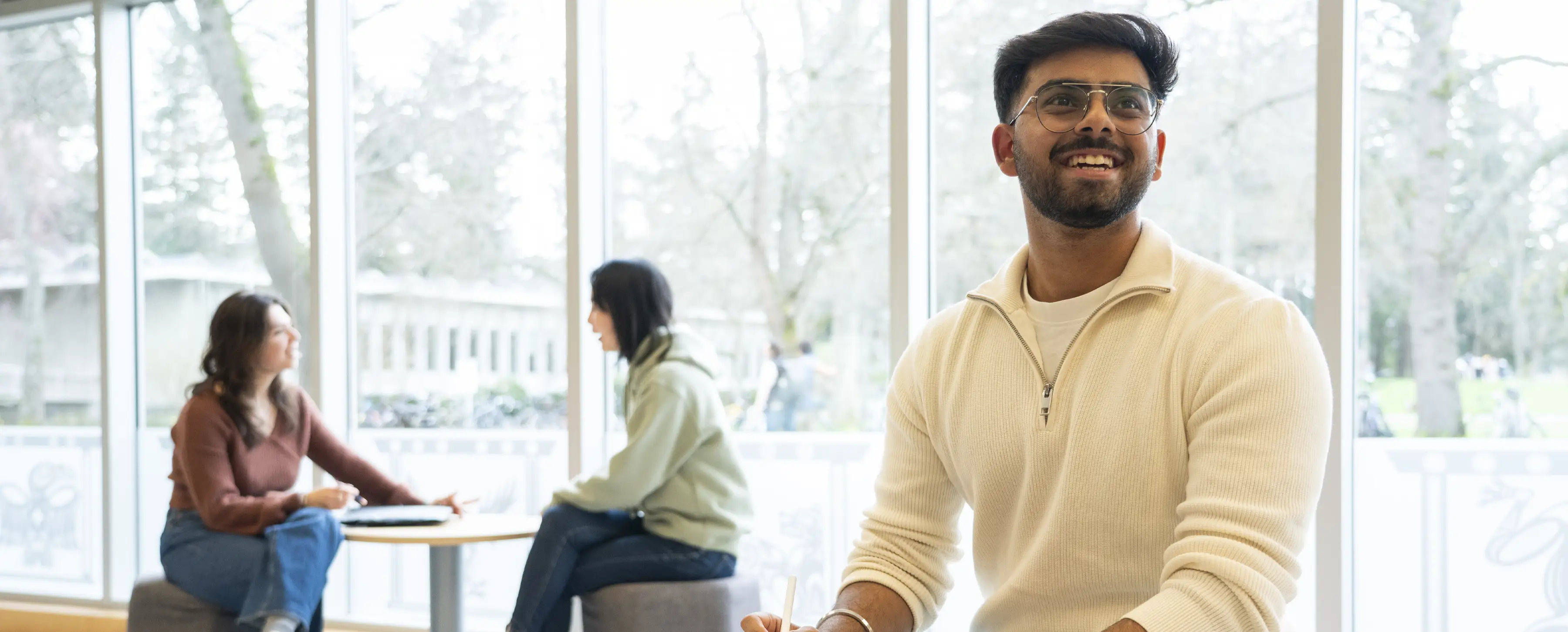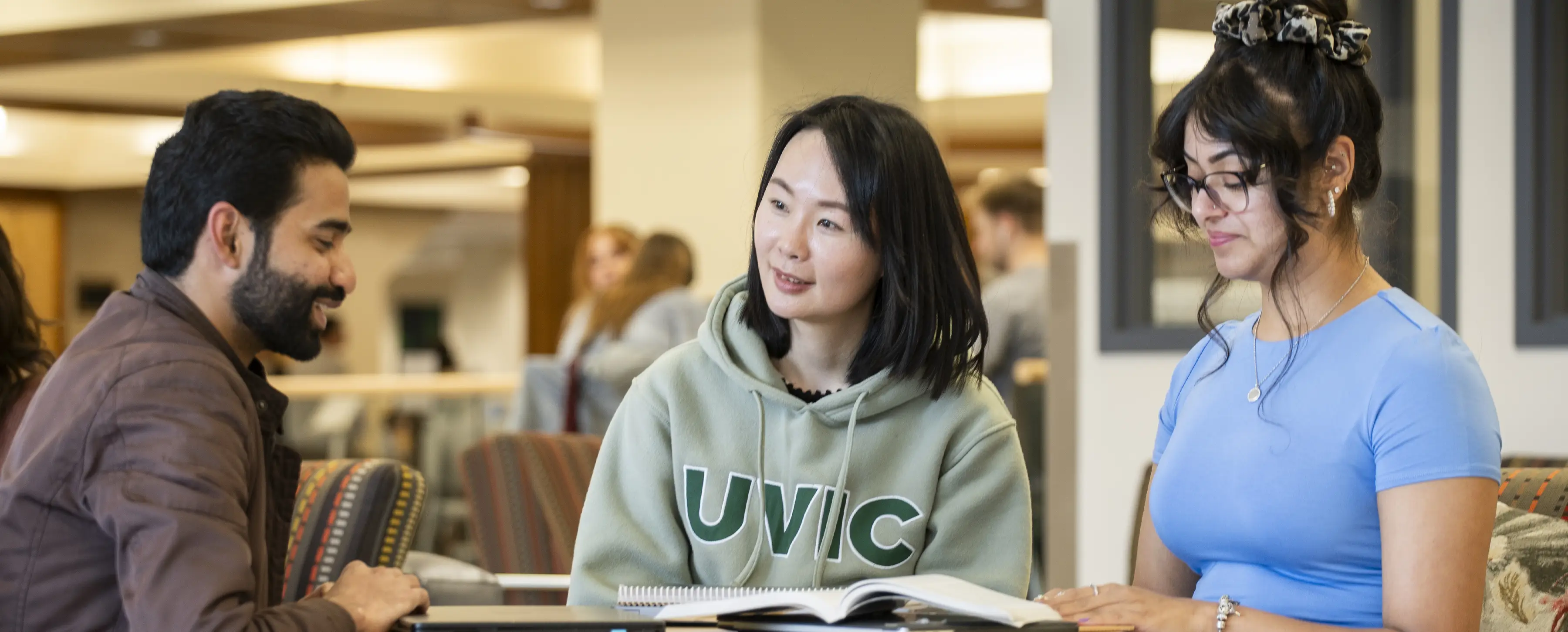For decades, UVic has been awarding degrees with majors such as biology, chemistry and physics. This year, for the first time, two degrees in climate science were awarded.
This week, science students Camryn Thompson and Maya deWitt crossed the convocation stage and became UVic’s first graduates from the new climate science program.
Choosing climate science
When the climate science program launched in 2023, both Thompson and deWitt had already declared their major in earth science—but neither were completely satisfied with the choice. Thompson had spent the summer of 2023 working as a sustainability intern for a development company, and the experience shifted the direction she wanted to go, career-wise—away from geology and towards climate and sustainability. Meanwhile, deWitt really liked learning about the climate, atmosphere and ocean, but wasn’t as interested in sedimentary geology. Both felt like the new climate science program would be a good fit, and so they switched their majors.
It was the right choice.
I really liked the upper-year classes we were taking in that first term,” says deWitt. “The classes were challenging, but I really enjoyed them and was motivated to learn the content. In climate science, I was able to explore topics I was interested in in every class, rather than just a few.”
— Maya deWitt, Climate Science graduate
Easing climate anxiety through knowledge
The content of their courses taught Thompson and deWitt the basics of climate science. They studied how to construct, analyze and interpret models of the Earth system, how to analyze climate data, the physics of the atmosphere and how the climate system interacts with past, present and future societies. They learned about the fundamental processes controlling climate and then applied this knowledge to practical problems such as air pollution and the urban effects on climate. Their courses taught them basic coding skills, including MATLAB and Python and they spent quite a bit of time solving physics problems. They also had opportunities to get out of the classroom—including a field trip on the Strickland, UVic’s marine research vessel, to collect samples for chemical analysis.
I feel a lot more knowledgeable about climate now. Climate change is a tough topic that comes up a lot, and people our age have a lot of anxiety. This program has increased my understanding of the systems at play, and this has helped ease my own stress. I now know what can be done and that people are working on solutions.”
— Camryn Thompson, Climate Science graduate

Contributing to local climate solutions
Thompson and deWitt are leaving UVic with the knowledge needed to contribute to climate solutions, but they’re also leaving having already made a contribution—several, in fact. Through their capstone climate solutions course (GEOG 489), they had the opportunity to work on local climate solutions, acting as consultants to the Capital Region District (CRD).
“Climate solutions was a small class with less than 10 students and was very collaborative and hands-on,” says Thompson. “The CRD came with a bunch of project options, and we were able to split into smaller groups depending on what we found interesting. The course gave us so much hands-on experience—it was almost like a real work experience.”
Thompson chose to work on a project related to hydrology and soils—a topic that isn’t covered in the program. She spent the term sorting through a giant pile of data to better understand the hydrology of the Sooke region. Using data such as elevation, soil texture, soil classification and slope, she was able to make predictions about drainage and run-off. Her final report also included a gap analysis, identifying areas that should be included in future CRD soil sampling to better understand hydrological processes and hazards, such as landslides and fire risk.
Meanwhile, deWitt and her partner were focused on rainfall in the Sooke watershed, creating a rainfall distribution map. Using past data that had been collected, their goal was to find a way to estimate how much rain is received in different areas of the Sooke watershed basin.
“Wildfires would greatly impact the integrity of the reservoir,” says deWitt. “Rainfall distribution is one component that could provide more insight into which regions in the basin have heightened fire risk and should therefore be candidates for increased monitoring.”
Expanding research beyond the local level
Thompson and deWitt also contributed to climate solutions through their honours projects.
deWitt’s project looked at Canadian Ice Service ice charts for the Amundsen Gulf in the Western Arctic. She compiled 31 years of ice charts to identify any years that seemed atypical in terms of ice concentration. She then compared those years to atmospheric data available from the National Oceanic and Atmospheric Administration (NOAA) to see if there was any correlation that could help provide an explanation for the anomaly.
Thompson’s project focused on developing a computational model of surface temperatures, focusing on urban areas. The model allows the user to adjust different parameters including surface material, vegetation and walls to determine the impact on ground temperatures. Models such as this can help identify ways to mitigate heat in cities and best practices for development, which will be increasingly important as global temperatures rise.
Building a climate science community
Thompson and deWitt have both been a part of the climate science program since its inception and have taken every climate science course together, alongside a core group of climate science students who formed the initial cohort. The group spent a lot of time together academically, hosting study sessions, puzzling their way through assignments and collaborating on group projects. They also became friends.
“Since the climate science cohort was pretty small, I got a chance to know everyone pretty well,” says Thompson. We were in many of the same classes, connected over social media, and even got everyone together to film video clips to help promote the program. Because the program was new, everyone was motivated to connect and create a community.”
It wasn’t just their fellow students who made up the community within the climate science program; their professors also played a role.
So many of the climate science professors are such amazing people. They’re good at explaining the concepts they teach, and they really want you to understand and ask questions. They helped foster a community around climate science and made it clear that they were always available to support us. I have not had a single negative experience with a climate science professor.”
— Maya deWitt, Climate Science graduate
Different experiences
While Thompson and deWitt spent a lot of time together over the last two years, their experiences also have differences. Thompson worked with the Office of Campus Planning and Sustainability for two years, contributing to student engagement projects, helping with sustainability tracking and working on research projects related to green buildings. Meanwhile, deWitt completed a co-op term with the Canadian Centre for Climate Services working a support desk position, helping to make climate data more available to the public and answering questions related to climate data. She also worked as a teaching assistant for EOS 130: Climate Change, a new course that introduces students to the climate system, the carbon cycle, the impacts of climate change and approaches to mitigation and adaptation.
Even apart, they were both still focused on climate and sustainability.
Joining the next generation of climate scientists
After two years of studying side-by-side, Thompson and deWitt will be heading in different directions next year. Thompson is jumping right into a master’s degree in industrial ecology here at UVic, pursuing her interest in urban solutions to climate change. deWitt is taking it a little slower and will be taking some time to relax before starting her next phase. She’s not sure what that will be quite yet but likes the idea of creating tailored solutions for specific problems and deep diving into a specific topic.
While they’ve had similar experiences over the last two years, Thompson and deWitt are two very different people. Yet, when asked for their best climate advice, their answers were almost identical: individual actions are important, and any type of contribution is a significant one.
A lot of people have this misconception that they don’t have any power over what happens when it comes to the climate crisis. I don’t think that’s true. There’s a lot that the individual can do. Individual actions can change the direction of climate policy, climate change and the narrative around climate. Do your research about where you’re spending your money. Connect to local government or your local MPs. Advocate for climate policies. It all helps.”
— Camryn Thompson, Climate Science graduate
The climate science program, jointly offered by the Faculty of Social Sciences and the Faculty of Science, allows students to learn about the complexities of human-induced climate change, while preparing them with the essential skills for transforming their knowledge into tangible actions. It is the first-degree program of its kind in North America, and the first on North America’s West Coast to be accredited for delivering on the United Nations’ Sustainable Development Goals (SDGs).



